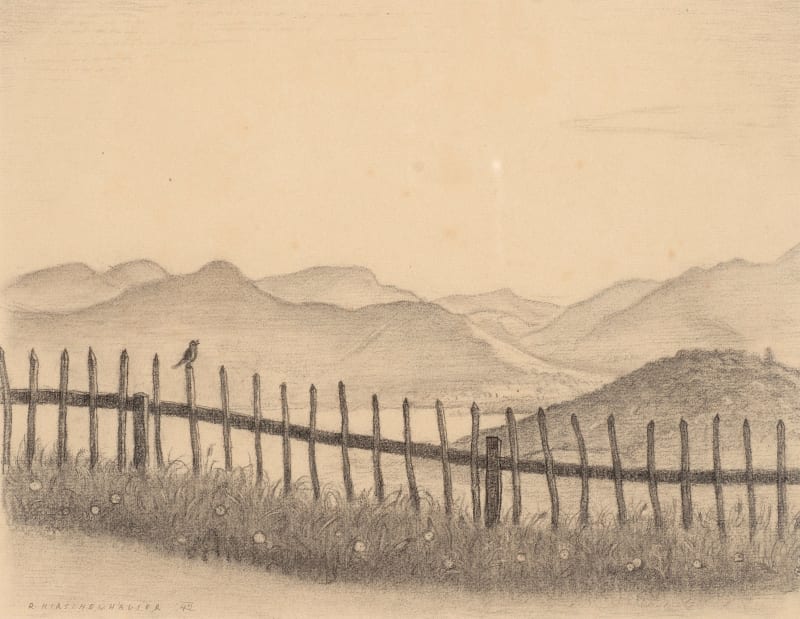Painter Rudolf Hirschenhauser was born to Jewish parents in Mokrin, Austria-Hungary (now Serbia) in 1882. After studying at the Academy of Fine Arts in Vienna (1901–07, he joined the progressive Vienna Secession group, exhibiting with them regularly from 1909 onwards. In 1914 he converted to Lutheranism. He married Hedwig Marx in the same year and the couple had two daughters before divorcing in 1932. Hirschenhauser became an established and sought-after portraitist of the Viennese elite, specialising in pictures of women and children. He held numerous exhibitions in the city, including at the Galerie Holbein (1928) and Galerie Wurthle (1934).
Following the 1938 Anschluss (Nazi annexation of Austria), Hirschenhauser’s home and most of his art collection, including his own artworks, were confiscated. In August 1939 he fled to England. He was interned in 1940 as a so-called ‘enemy alien’ for six months at Hutchinson camp (known as the 'artists' camp’) on the Isle of Man, where he made portrait sketches of fellow internees and presented his work in camp exhibitions. His internment experience was unexpectedly positive and productive - 'the most interesting six months of my life' (‘Bradford Observer’ 26 April1944) - and inspired much of the work he made after release. In 1944 Hirschenhauser held a solo exhibition at the Kemp Gallery in Harrogate, Yorkshire, which featured his internment drawings, as well as English portrait commissions, including that of the Mayor of Harrogate. From 1948 onwards, Hirschenhauser lived in Yorkshire.
Rudolf Hirschenhauser died in Claro, West Riding, Yorkshire, England, in 1951. His work is represented in UK public collections including the Ben Uri Collection, Tate and the University of Edinburgh.


